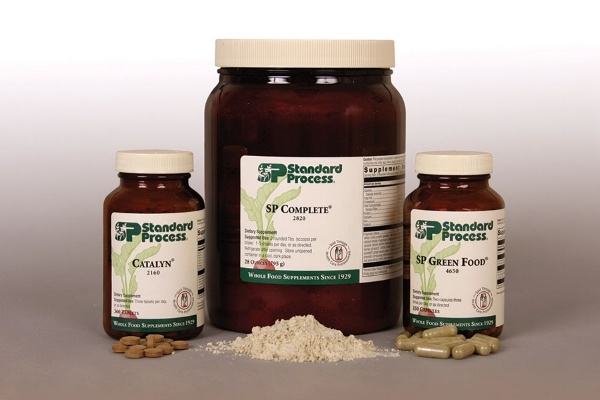As technology has continued to advance throughout the years, we have seen drastic changes within our everyday lives - including the way we perform business. We can see this drastic technological change in the way we do things, specifically in the manufacturing industry. Where employees and humans used to dominate the plant floor, we can now see automation and robotics swooping in and taking over where human jobs were once needed.
 While this may sound negative, these technological advances have aided mass production immensely and have paved the way for new innovative items to be developed. Manufacturing Technologies have also drastically improved manufacturing operations through waste elimination and making processes much more efficient - which enables manufacturers to utilizes resources to the fullest extent. The impact of technology on manufacturing is rather important to understand, which is why in this blog we will discuss how technology has drastically altered the manufacturing industry.
While this may sound negative, these technological advances have aided mass production immensely and have paved the way for new innovative items to be developed. Manufacturing Technologies have also drastically improved manufacturing operations through waste elimination and making processes much more efficient - which enables manufacturers to utilizes resources to the fullest extent. The impact of technology on manufacturing is rather important to understand, which is why in this blog we will discuss how technology has drastically altered the manufacturing industry.
Some of the Main Ways Technology Has Changed (And Still Is Changing) Manufacturing
Manufacturing has seen an immense turn around since the 2009 recession, in which there have been an increase of about one million jobs in the manufacturing sector. Manufacturing output is on the rise and is being aided by the increased utilization of manufacturing technology. Therefore, some of the main ways technology has changed (and still is changing) manufacturing includes the following:
- The Rise of Technology - Technology became prevalent within manufacturing all the way back to the Industrial Revolution. This was due to mill owners seeking to increase output in the cotton mills. As technology has become an essential part of our everyday lives, this has also been the case with manufacturing. Without manufacturing technology, manufacturing would be extremely inefficient and wasteful. While this is partly due to robotics and automation, we can also see that softwares such as ERP, MRP, and APS play a tremendous role through overseeing production and ensuring that everything is on time and efficient. With these kind of softwares, we can see adequate production planning, production control, execution, and more.
- Technology 4.0 - There are experts that believe we are apart of a fourth industrial revolution, where technologies such as nanotechnologies and photonics are upgrading older technologies. This makes the future for manufacturing look increasingly bright. This rise of digital technology has allowed smaller manufacturers to be able to compete with much larger companies in the marketplace. Digital marketing has also enabled smaller manufacturers to connect with consumers all over the globe, which has been extremely beneficial. The utilization of automation and complex machinery has revolutionized mass production and increased output while reducing manufacturing costs, which has led to cheaper costs to consumers as well.
- Industrial Robotics - The utilization of industrial robots has played a substantial role in the resurgence of manufacturing as a contributor to GDP. With around 237 thousand robots on manufacturing lines in the United States, we can definitely see that robots have impacted the manufacturing industry immensely. With industrial robotics, there are less errors, which means that production flows much easier and efficiently, which saves the facility large sums of money.
- 3D Technology - 3D design technology has allowed manufacturing facilities to create detailed components quickly and economically. 3D technology is revolutionizing the manufacturing industry and smaller manufacturers have embraced 3D printing technology. It is exactly what manufacturers need for low volume, high-quality manufacturing of children’s toys and electronic goods.
Manufacturing technology is key within manufacturing operations that are seeking to keep up with competition and take their production efficiency up a notch. A software that can aid manufacturing technology and ensure that production is on time and efficient is PlanetTogether’s Advanced Planning and Scheduling Software (APS). APS software is easily able to generate visual production schedules that allow you to have thorough insight into your manufacturing operation and locate any areas where production efficiency is lacking. APS has become a necessity for production facilities that are seeking to take production to the next level.
Advanced Planning and Scheduling Software
Advanced Planning and Scheduling (APS) software has become a must for modern-day manufacturing operations due to customer demand for increased product mix and fast delivery combined with downward cost pressures. APS can be quickly integrated with a ERP/MRP software to fill gaps where these system lack planning and scheduling flexibility and accuracy. Advanced Planning and Scheduling (APS) helps planners save time while providing greater agility in updating ever-changing priorities, production schedules, and inventory plans.
- Create optimized schedules balancing production efficiency and delivery performance
- Maximize output on bottleneck resources to increase revenue
- Synchronize supply with demand to reduce inventories
- Provide company-wide visibility to capacity
- Enable scenario data-driven decision making
Implementation of Advanced Planning and Scheduling (APS) software will take your manufacturing operations to the next level of production efficiency, taking advantage of the operational data you already have in your ERP.
Related Integration Video
APS Resources